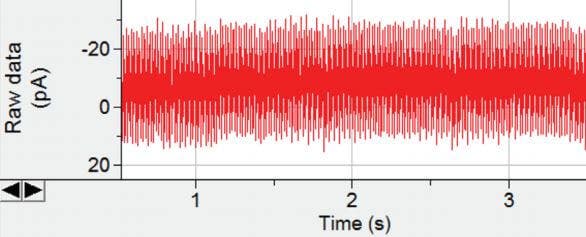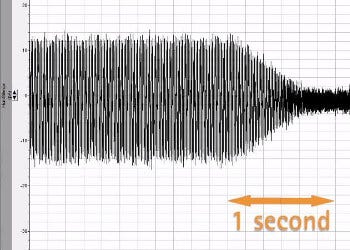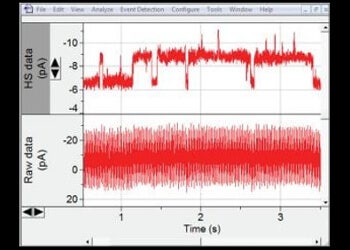
HumSilencer Technology
Eliminate 50/60 Hz line-frequency noise in less than one second
Electric hum - A common patch clamp problem
50/60 Hz line-frequency noise, also known as electrical hum, is the most common source of background noise in patch-clamp electrophysiology experiments. Originating from alternating current (AC) of the electrical mains and delivered via power outlets, this noise can often overwhelm biological signals of interest, making sensitive current or voltage measurements nearly impossible.
Typical troubleshooting can be time-consuming and only partially effective as researchers need to identify and either eliminate or shield noise source. While notch or off-line filtering methods can be employed, often these filter-based methods do not fully remove electrical noise, and in some situations can actually distort biological signals and impair data accuracy.

Electrical hum overwhelming a single-channel recording of the principal subunit of olfactory cyclic nucleotide-gated channel (CNCA2). Data courtesy of Tsung-Yu Chen, Ph.D., University of California, Davis.
HumSilencer eliminates electrical hum without causing signal distortion
The HumSilencer™ technology available in Axon™ Digidata® 1550B Low Noise Data Acquisition System is a filter-free, adaptive technology that learns and removes local line-frequency noise patterns from incoming signal in less than one second.



- Filter-free noise elimination means no signal distortion such as frequency change, amplitude attenuation, phase shift, or DC voltage change
- HumSilencer is accessed through Axon pCLAMP™ or Axoscope™ software and can be turned on or off with a single click. No extra hardware is required!
- Learns and adapts to changing noise profiles within one second. Eliminates up to 20 V amplitude at the digitizer's analog input.
Patch and Record Cellular Network Noise-Free
Equipped with up to four analog HumSilencer inputs, the Digidata 1550B System enables you to record multiple cells at once for cellular network studies without 50/60 Hz line-frequency noise.
For more information, please visit the Digidata 1550B page or download our HumSilencer application notes.